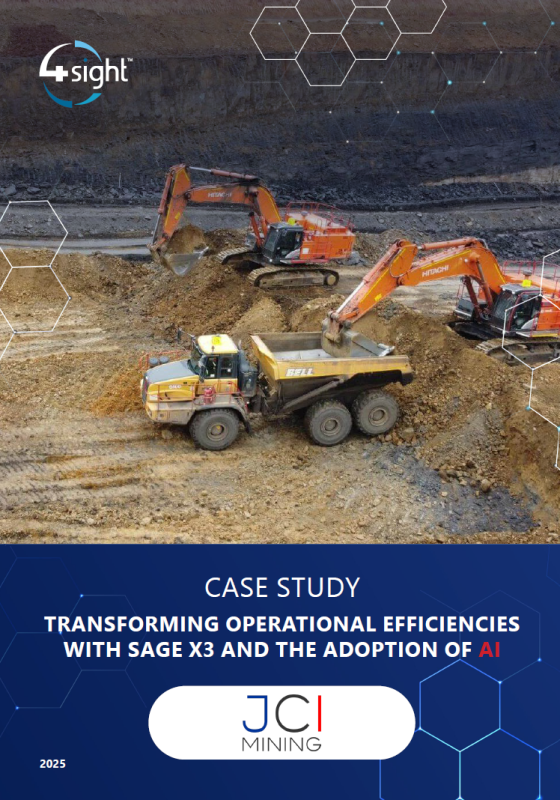Case Studies
Case Study: Transforming Operational Efficiencies with Sage X3 and The Adoption of AI

About the Company
JCI Mining is a leading opencast mining contractor based in Middelburg, Mpumalanga, South Africa. The company operates primarily in the coal mining sector, supplying Eskom power stations, and producing export-quality coal for international markets. Known for its extensive use of yellow metal equipment, JCI Mining is committed to operational excellence, efficiency, and cost control across its multiple sites. With a growing footprint and a forward-thinking approach, the company has long recognised the importance of robust operational and financial management systems to support its continued growth.
Challenges
As JCI Mining expanded, it became increasingly difficult to manage daily operations using their existing business management systems. The legacy solution, in combination with Excel, had served them well for a time. However, it became clear that a more integrated and scalable ERP solution was needed to support their long-term success in an industry undergoing digital transformation. Processes such as handwritten purchase orders and cost control through spreadsheets became difficult to manage at scale, and the organisation recognised the need to transition into a more streamlined, controlled environment that would enable them to plan bigger when implementing their future strategy. The goal was not just to keep up — but to lead — in a globally competitive industry that is investing heavily in digital technologies, including big data and artificial intelligence.
Solution
The decision to implement Sage X3 marked a significant milestone in JCI Mining’s journey. After discussions with 4Sight began nearly two years prior, the company officially moved forward with Sage X3 as the backbone of their integrated ERP platform. As part of this transformation, they successfully completed the integration of Sage X3 with their Asset Management and Maintenance system, On-Key by Pragma. This was a key phase in their broader growth strategy and signalled the start of a new era for the business.
While Excel continues to play a role, especially in an industry where it remains a powerful tool, the implementation of Sage X3 allowed the company to reduce manual processes, improve controls, manage stock levels more efficiently, and perform more advanced financial reporting. After just three months of being live, the company has already experienced improvements across multiple areas, particularly in operational efficiency and cost management.
Benefits and Outcomes
With Sage X3 now in place, JCI Mining has unlocked a range of capabilities that were previously out of reach. The transition to a fully integrated system has not only reduced the company’s reliance on paper-based processes, but it has also introduced new levels of control and visibility across the business. With tighter stock management, advanced reporting, and integrated cost tracking, the company can now make faster, more informed decisions.
Looking ahead, JCI Mining is excited about the potential that artificial intelligence holds for the next phase of their strategy. Already, they have begun exploring AI applications in areas such as stockout analysis and demand forecasting—experiments that have yielded promising insights. The integration between Sage X3 and On-Key enables predictive maintenance planning, which is informed by service limits or warranty expiries, creating a synchronised flow of information across platforms. With AI’s ability to continuously learn and suggest the most viable outcomes, users are empowered to focus on optimising results rather than spending time compiling data manually.
JCI Mining believes that AI-driven analytics and process automation will be essential to staying competitive. Whether it is forecasting demand, automating reporting, or enhancing analytics and business intelligence, AI is expected to play a significant role in improving decision-making and efficiency. As the company continues to build on the foundation laid with Sage X3, they are focused on leveraging AI to further scale operations, reduce downtime, and improve overall productivity.


